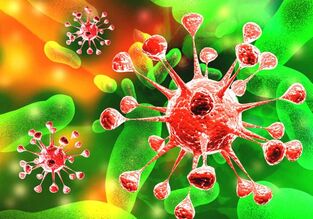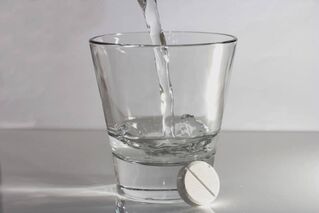Antibiotic therapy is the main treatment for prostate inflammation. Antibiotics for prostatitis are divided into several groups. The choice of medication depends on the nature of the inflammatory process and the characteristics of the course of the disease in the patient. Often, pathogenic microorganisms develop resistance to the active ingredients of the drug. In such cases, antibiotic therapy is selected taking into account the susceptibility of the pathogenic agent to a particular active ingredient, and the drug is prescribed only after bacterial analysis of prostate juice.
Why are antibiotics needed?

With the increase of prostatitis, the first priority is to stop the inflammatory process. For this, antibacterial therapy is indicated, as only antimicrobial drugs can quickly eliminate pathogenic agents that provoke the inflammatory process.
Symptomatic treatment without the use of antibacterial drugs is ineffective and gives only temporary results. Any anti-inflammatory, analgesic and antipyretic drugs for prostatitis are only used in addition to antibiotic treatment.
Eliminating disease agents allows:
- relieves pain syndrome;
- normalizes body temperature;
- improves urodynamics;
- normalizes prostate function.
Thus, antibiotics for prostatitis in men can not only eliminate the inflammatory process, but can also reduce symptoms. Improvement of well-being is due to the elimination of swelling of inflamed organs. The inflamed organ is constantly enlarged and puts pressure on the surrounding tissue, which causes pain.
Antibiotics treat both the symptoms and causes of the disease.
The main advantages of antimicrobials are their fast action and ease of use. Antibiotic treatment of prostatitis is done with pills, injections, or the use of suppositories.
In order for the medicine to work quickly, you need to choose it strictly according to your doctor's instructions. To determine the type of pathogenic microorganisms, it is necessary to undergo a series of examinations, first of all - the study of bacteria on the composition of the secretion of the prostate gland. Only the determination of the causative agent of the inflammatory process guarantees the optimal choice of medication that will relieve quickly.
It is important to note that antibiotics for prostatitis are indicated for the treatment of only infectious, both acute and chronic forms of the disease. With non-communicable inflammation, its development is due to age-related changes or violation of prostate trophism, the use of antimicrobial drugs is not appropriate, as is adenoma.
Types of drugs
In the treatment of prostate inflammation, priority is given to broad-spectrum drugs that are active against a large number of pathogens. This choice is explained by the fact that in some cases prostatitis is caused by the simultaneous action of several types of pathogens at once.
The following medications are effective antibiotics for prostatitis:

- fluoroquinolones;
- cephalosporins;
- macrolide;
- tetracycline;
- penicillin.
Each type of drug is only effective for certain groups of bacteria.
Each antibiotic listed for prostatitis is active against specific microorganisms. Drugs from different groups are interchangeable, if the inflammation is provoked by opportunistic microorganisms, for example, E. coli.
Fluoroquinolones
Antimicrobial drugs from the fluoroquinolone group are simply conventionally referred to as antibacterial drugs. In terms of their pharmacological action, these agents show significant antibacterial activity, however, in terms of their composition, they are not antibiotics.
The main difference between fluoroquinolones and broad-spectrum antibiotics is their synthetic composition. Fluoroquinolones, in contrast to antibiotics from the penicillin or tetracycline group, have no natural analogues. This is the main advantage of drugs in this group - because there is no natural substitute for the active ingredient, this means that pathogenic agents are unable to develop resilience, and treatment of chronic prostatitis with fluoroquinolone antibiotics will be more effective.
Drugs in this group are active against most bacteria, including sexually transmitted infections (chlamydia, Trichomonas). Today, fluoroquinolone is the best medicine for the treatment of lazy bacterial prostatitis. Subject to the right dosage and the right choice of medication, fluoroquinolones show a rapid therapeutic effect and cause minimal adverse reactions compared to antibiotics. Drugs in this group are toxic, so it is important to adhere to the treatment regimen recommended by your doctor.
In chronic bacterial inflammation, drugs of this group are used for a long time, 3-4 weeks.
The list of drugs in the fluoroquinolone group is quite extensive, therefore, to choose the optimal drug, you need to see a specialist. According to the doctor's prescription, the regimen and duration of treatment can be adjusted.
Penicillin
In most cases, doctors prescribe penicillin medication for the first episode of prostatitis. Such antibiotics for prostatitis are well tolerated by the body and have a significant therapeutic effect, suppressing the activity of a number of opportunistic bacteria that cause prostate inflammation.
A large number of people are resistant to this group of drugs. This is due to the fact that penicillin has been used to treat bacterial inflammation for the past 50 years. To enhance the therapeutic effect, the use of combined antibiotics for the treatment of prostatitis in men is practiced - this is a drug with penicillin and clavulanic acid.
The use of combination drugs allows you to get therapeutic effects quickly. This drug is well tolerated, has few side effects and is affordable, which makes it popular. Among the forms of relief are suppositories for prostatitis with antibiotics, tablets and capsules, solutions for intramuscular injections. Although injections with antibiotics can stop inflammation quickly, men prefer tablets in the form of drugs because of their ease of administration.
Doctors and patients speak well of this product, stating:
- significant antibacterial effect;
- simple release form;
- acceptable costs;
- Minimal side effects.
Thanks to clavulone in its composition, its preparation penetrates directly into the tissue of the prostate gland.
Drugs in this group are taken for three weeks. The maximum dose is 1 g of active ingredient per day, equivalent to 1-2 tablets, depending on the form of release.
Often, these drugs cause disorders of the gastrointestinal tract, which are indicated by diarrhea, nausea, and abdominal pain. To reduce the negative effects on the mucous membranes, you should consult a doctor about the appointment of probiotics.
Tetrasiklin
The use of tetracycline antibiotics for the treatment of prostatitis in men has decreased in recent years. This is due to the many side effects and inadequate intake of active substances in the inflamed prostate tissue.
The advantage of drugs in this group is the significant activity against chlamydia and ureaplasma. Its disadvantages are the negative effects on the gastrointestinal tract, a large number of cases of individual intolerance and negative reactions of the body.
Due to the risk of complications, you should not take this medicine yourself. The treatment regimen and duration of therapy are chosen by the doctor individually.
Macrolides
When wondering what antibiotics to take for prostatitis, many tend to like macrolides. Drugs of this group are quite common, this drug is often prescribed in case of ineffectiveness of other drugs, which occurs when pathogenic microorganisms are resistant.
Unlike other antibiotics, macrolides have a small number of uses. The drug is prescribed only for inflammation caused by chlamydia, ureaplasma and gonococcal infections.
Although the mechanism of action of these drugs on the inflamed prostate is not fully understood, the main advantages of the drug are low toxicity and minimal side effects. Along with a reasonable cost, this makes the drug a popular remedy for prostatitis in men.
The course of treatment depends on the severity of the inflammatory process and requires an average of three weeks. Preparations of macrolide groups are produced in tablet form, as well as solutions for injection, so the latter is not widely used among patients due to the inconvenience of its use.
Cephalosporins
Antibiotics of the cephalosporin group are one of the most effective drugs for bacterial prostatitis. This medication works quickly to relieve symptoms a few days after starting treatment. Due to the reasonable cost, the course of drug treatment will be cheap and affordable for everyone. The drugs are well received by the body and practically have no side effects, but the drug has one significant drawback - the drug is only produced in injection solution. At home, not everyone can give an injection on their own, therefore, treatment with cephalosporins is done mainly in hospitals.
The treatment regimen for prostatitis with these drugs is chosen by the doctor. Typically, 1 injection of the drug is prescribed daily for 7-14 days.
The doctor decides which medication to choose after examining the patient. Drugs in this group are characterized by a broad spectrum of action, but are inactive against chlamydia.
List of drugs in tablets

Easiest to treat prostatitis at home with pills or capsules. Popular groups of drugs in this form of release:
- penicillin;
- macrolide;
- fluoroquinolones;
- tetrasiklin.
How to treat inflammation, as well as the duration of the course and regimen - depends on the dose of the drug and the form of the disease. Antibiotic therapy requires 10-12 days for acute inflammation, and three weeks for chronic inflammation.
Antibiotic tablets are recommended to be taken immediately after meals. It is best to take capsules at the same time every day. If the drug is used several times a day, the interval between doses should be the same.
Antibiotic Suppositories
Another easy-to-use home treatment method is rectal antibiotic suppositories.
The duration of treatment is 7-21 days, depending on the severity of symptoms. Often, to achieve the best therapeutic effect, doctors prescribe the simultaneous use of suppositories and the use of antibiotics in tablets, while drugs with different active ingredients are selected. This combination therapy allows you to stop the inflammatory process as soon as possible.
Candles are used once a day. They are inserted vertically at bedtime.
Precautions
Any antibacterial drug has a number of contraindications. This list must be read before starting medication. Absolute contraindications to taking any antibiotic:
- individual intolerance;
- acute renal failure;
- acute liver failure;
- simultaneous intake of alcohol.
A large number of adverse reactions during antibiotic therapy are observed from the gastrointestinal tract. These include intestinal dysbiosis, diarrhea, abdominal pain, nausea and vomiting.
If an unwanted body reaction appears, it is permissible to replace the drug with a drug with another active ingredient in the composition. Prescription fluoroquinolones to replace penicillin antibiotics with the development of side effects or last intolerance is often practiced. However, analogs should be chosen by the doctor, depending on the nature of the reaction to the drug.































